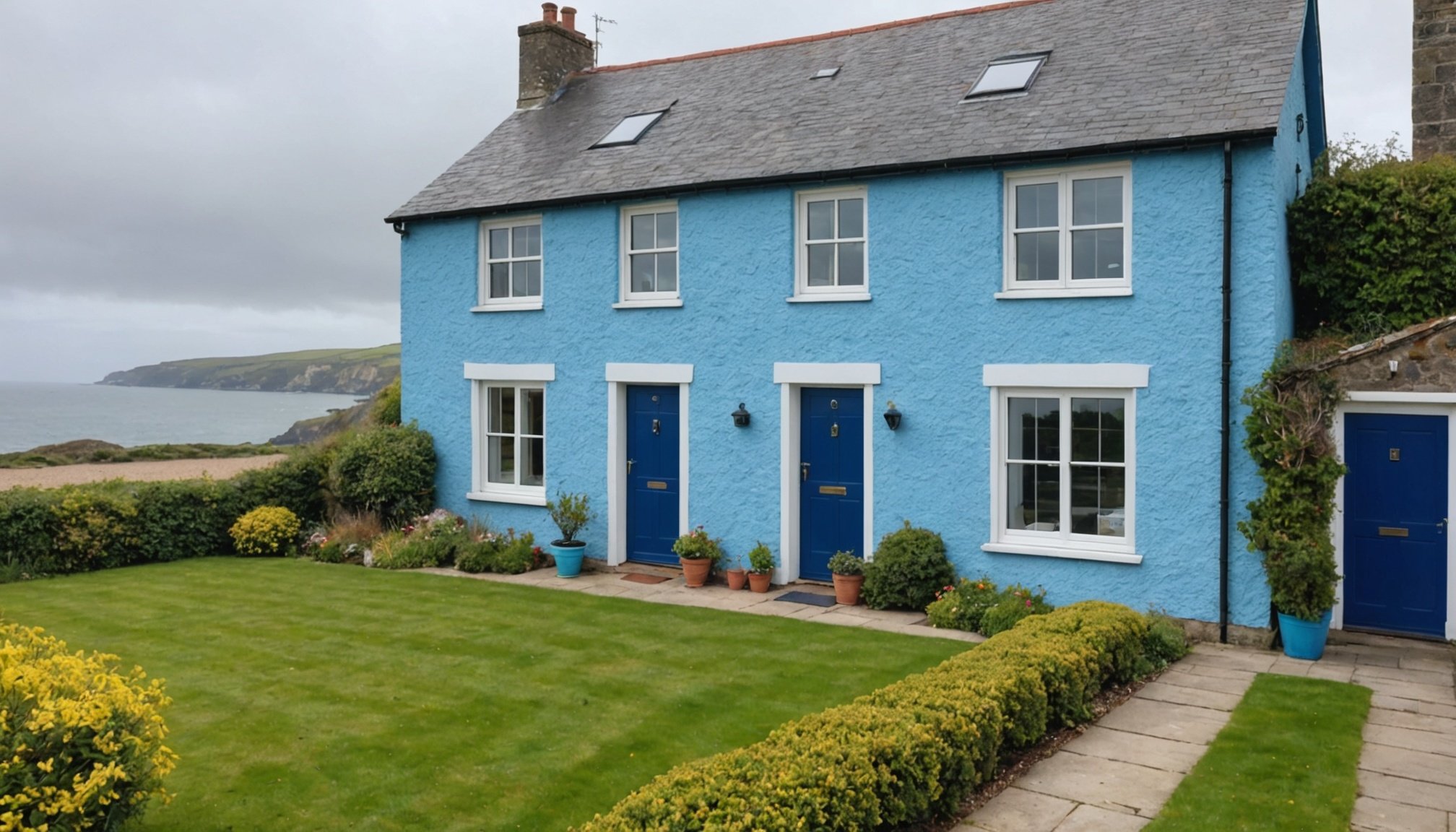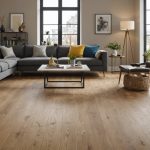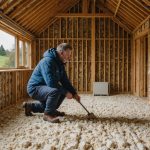Understanding Condensation in Coastal Homes
Condensation occurs when warm, moist air comes into contact with cooler surfaces, leading to the formation of water droplets. This is particularly common in coastal homes where high humidity levels prevail. The moisture-laden air from the ocean contributes significantly to condensation problems in these regions.
Homes in Cornwall, for example, navigate unique challenges due to their proximity to the sea. Coastal environments not only have high humidity but also a higher concentration of saltwater. This combination accelerates condensation, making these homes more susceptible to damage. The presence of saltwater can exacerbate issues by speeding up corrosion and degradation of building materials, making maintenance a critical concern for homeowners.
Also read : Discover the 5 Best Sustainable Insulation Options for Eco-Conscious Homes in Wales
Neglecting condensation issues can lead to serious consequences. From a health perspective, excess moisture fosters the growth of mold and mildew, posing respiratory health risks to the inhabitants. Additionally, the structural integrity of the house could be compromised, leading to costly repairs. Unchecked humidity issues can result in the deterioration of walls, ceilings, and wooden structures, gradually decreasing the property’s value and longevity. Addressing these problems promptly is essential to mitigate long-term damage and health risks.
Effective DIY Strategies for Prevention
Living by the coast comes with its unique challenges, particularly when it comes to managing condensation. Proper ventilation is crucial in preventing excess moisture in your home. Install vents in high-moisture areas like bathrooms and kitchens to ensure air can circulate effectively. Consider using portable fans if natural ventilation is insufficient.
In parallel : Top Toddler-Friendly Stair Gate Solutions for Two-Story Homes in Birmingham: Ensuring Safety and Peace of Mind
Investing in DIY condensation solutions such as moisture absorbers can significantly reduce moisture levels. These can be strategically placed in damp-prone areas of your home. Products like desiccant packs or silica gel are effective at trapping humidity, and they’re relatively inexpensive.
Regular home maintenance is key to keeping condensation under control. Frequently check and clean window seals to avoid moisture build-up. Look for any leaks in the roof or plumbing that might be contributing to dampness. Simple tasks, like wiping windows and surfaces dry, can make a big difference, particularly in coastal homes where humidity is often high.
By incorporating these home maintenance tasks and solutions, you can enjoy the benefits of coastal living without the worry of excessive indoor moisture.
Advanced Solutions for Long-term Mitigation
When it comes to tackling persistent humidity issues, implementing advanced condensation solutions can significantly enhance indoor comfort. Enhancing insulation is a primary step, as it effectively combats humidity by reducing thermal bridges where moisture often accumulates. By upgrading to high-performance insulation materials, you prevent the warm, moist air from condensing on cooler surfaces, leading to a more controlled indoor climate.
In addition, consider installing advanced ventilation systems. These systems are designed to improve air circulation, which directly impacts indoor humidity levels. Options such as heat recovery ventilation (HRV) units not only refresh indoor air but also retain heat, offering both comfort and energy efficiency. These systems can substantially lower humidity, preventing structural and health issues associated with dampness.
Dehumidifiers play an integral role too. They work by extracting excess moisture from the air, maintaining optimal indoor humidity levels. A wide range of dehumidifiers is available, from portable units suitable for individual rooms to whole-house systems integrated into HVAC setups. By effectively employing these advanced condensation solutions, including insulation, ventilation, and dehumidifiers, you can create a healthier, more comfortable living environment.
Environmentally Friendly Options
In the quest for sustainable living, homeowners have begun seeking ways to utilize natural moisture control methods effectively. Eco-friendly solutions not only ensure a healthier living environment but also contribute to the preservation of our planet’s resources.
Natural moisture control can be achieved by incorporating sustainable materials like bamboo or reclaimed wood in home improvements. These materials not only add aesthetic appeal but also aid in maintaining appropriate humidity levels within the home. Additionally, using VOC-free paints and natural fibres in furnishings can help minimize harmful emissions, enhancing the overall health of indoor spaces.
Implementing energy-efficient strategies can significantly reduce condensation and save on energy costs. For instance, installing double-glazed windows creates better insulation, minimizing heat loss and reducing the need for excessive heating. Moreover, utilizing energy-efficient appliances further lowers electricity use while maintaining a comfortable home environment.
By strategically employing both natural moisture control methods and sustainable materials, it is possible to create a home that aligns with eco-friendly living standards. Ultimately, adopting energy-efficient practices not only benefits the individual homeowner but also supports broader environmental goals. This approach lives at the heart of sustainable living, offering a path to a more harmonious existence with our natural surroundings.
Expert Advice and Case Studies from Cornwall
Addressing condensation issues in Cornish homes requires insightful strategies tailored to local conditions. Interviews with local builders and damp specialists offer expert insights into overcoming these challenges. These professionals highlight the significance of understanding Cornwall’s unique climate, as increased humidity along the coast contributes to condensation problems.
One of the successful case studies involves a Cornish home that utilised improved ventilation systems as a local solution. By installing high-quality extractor fans and ventilation systems, the property owner effectively reduced moisture levels inside. This case study demonstrates the impact of such interventions, especially in homes situated close to the sea.
Another vital recommendation emerged from interviews with coastal property owners, who prioritised regular maintenance of insulation and windows. This proactive approach is crucial in preventing moisture accumulation. Their collective experience underscores the importance of routine checks and upgrades to withstand Cornwall’s damp climate.
These expert insights and case studies reveal that while Cornwall’s weather poses challenges, strategic measures can significantly improve indoor conditions. Emphasising local solutions and specialist recommendations can guide effective condensation mitigation efforts. Understanding these examples enables homeowners to make informed decisions for their properties.
Financial Considerations and Affordability
Condensation solutions can vary greatly in terms of costs, which is essential for homeowners to consider when seeking cost-effective solutions. Installation of dehumidifiers or air vent systems involves an initial investment, but these solutions often provide value for money in the long term by dramatically reducing moisture problems. Alternatively, less costly options include using exhaust fans or moisture-absorbent materials, which can also yield benefits, depending on your particular needs and budgeting.
Understanding the short-term versus long-term financial benefits is crucial in decision-making. Short-term solutions may offer immediate relief at a lower initial cost; however, more permanent fixes like proper insulation or window upgrades lead to lasting savings by protecting the property’s structure and reducing repair costs.
For those anticipating home improvements, it is advisable to incorporate these upgrades into a broader home maintenance budgeting plan. Allocating funds specifically for improving air circulation and thermal insulation can mitigate condensation issues effectively. This not only enhances your living environment but also increases your home’s resale value, highlighting the value for money gained from comprehensive investments in home efficiency. Consider setting aside a set amount each month to gradually accumulate the necessary funds for these effective home improvements.











